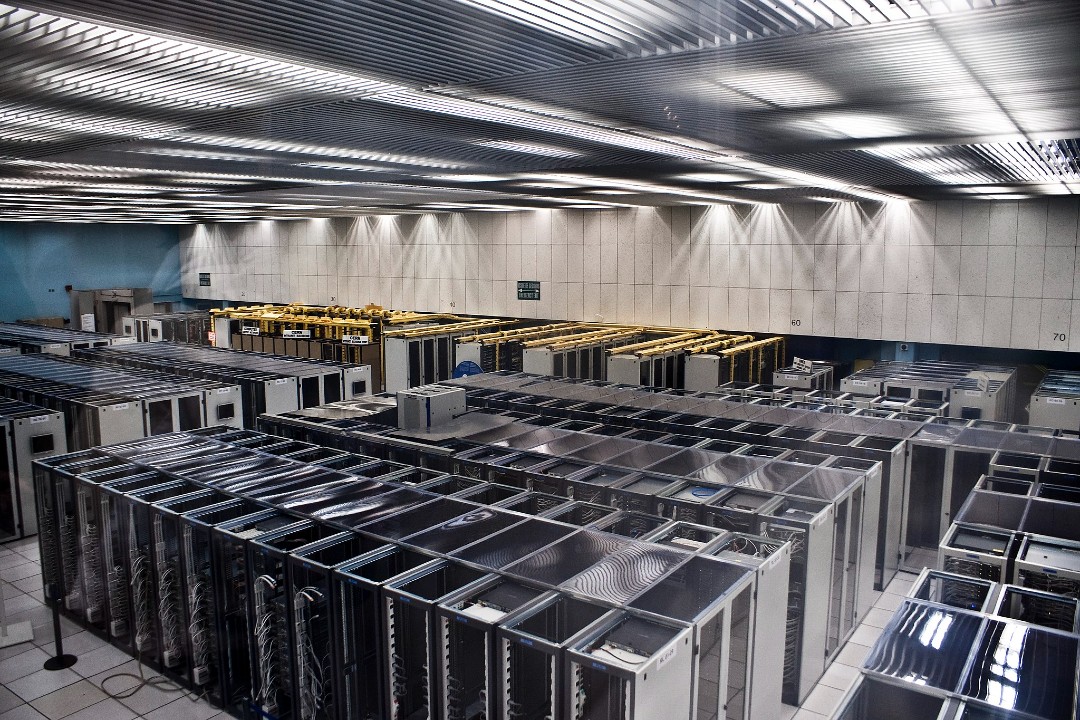The provincial government's effort to attract $100 billion in investment in hyperscale data centres in just five years would worsen Alberta's already outsized emissions from electricity production and could not be accommodated by the current public grid, a Pembina Institute researcher said.
"If all of those data centres go forward, and I am not suggesting that they do … that would put (our carbon emissions from electricity) higher than when we were running our electricity system off (of) mostly coal," Will Noel, a senior analyst for Pembina's electricity team, told Taproot.
Pembina data estimates that Canada emits 58 megatons of carbon each year creating electricity, Noel said. Alberta contributes 33 of those megatons, or more than half. Other provinces produce more electricity, he said, but reduce their carbon footprints by employing nuclear and hydro dams to create it. He said Alberta is comparatively "dirty" when it comes to electricity generation.
"Alberta only accounts for about 10% of the electricity generated in the country (in 2022), but about half of the emissions from electricity," Noel said.
Brent Jensen, the senior director of business development for Edmonton Global, said the province's push for data centres might be motivated by the fact we have "stranded" natural gas resources.
"We've had an inability to move that (natural gas) to market," Jensen told Taproot. "We've always had an abundance of natural gas. I think this is probably where the province is headed with, 'How do we utilize our natural gas for further investment into the region?' Of course, we're doing it on hydrogen … This is just another use-case on the utilization of natural gas for power generation."
Alberta's emissions from generating electricity, including burning natural gas to generate it, are at odds with companies like Microsoft and Amazon, which need hyperscale data centres but also need to offset the pollution they create, Noel said.
"A lot of these companies have (environmental, social, and governance) goals, and they're looking to reduce their emissions," Noel said. "If they were to supply all of their data with gas, I think that would go quite counter to that … I think there's a tension there."

Data centres like this one could significantly increase Alberta's emissions from generating electricity, and if the province's plan to lure $100 billion in investment in the operations in the next five years is successful, the current electricity grid cannot accommodate them. (Florian Hirzinger/Wikimedia Commons)
Both Noel and Jensen said Alberta could offset the emissions created if data centres are built here by building solar, wind, and nuclear electrical generation, in order to make the energy cleaner and cheaper.
"Some of the companies down in the 'States, they're looking to re-power nuclear facilities," Noel said. "Some are looking to construct new nuclear facilities, but that kind of comes in tension with the development timelines, and the costs of those don't really align with the fact that (Alberta wants) to build those data centres now." He added that generation facilities for wind and solar could be built next to data centres.
Alberta slowed approvals for renewable energy projects with a moratorium that lasted from August 2023 to February 2024. The provincial government also added new restrictions after the ban ended.
Well before Alberta's efforts to attract data centres, the state of Virginia established "Data Center Alley," which was home to 70% of the world's data centres as of May 2024. Buddy Rizer, the executive director of Loudoun County Economic Development in Virginia, will give a keynote during a BOMA Edmonton luncheon event focused on data centres on April 10 at the Chateau Lacombe.
Virginia is pursuing nuclear, solar, and wind to generate electricity to assist the energy needs of data centres, which is something Noel said Alberta could do, too.
"You're not going to get a 100% of your power, all the time, from those sources, but you can definitely significantly decrease the amount of gas or grid electricity that you need by putting these renewable sources (next to data centres)," he said. "The added benefit of that is that wind and solar are lower cost than gas."
Technology and Innovation Minister Nate Glubish is one of the loudest voices pushing for data centres to come to Alberta. Glubish has said natural gas is the likeliest source of energy for data centres for the first five years that they operate in the province. The province also suggested that data centres bring their own power if they want to open shop here.
That makes sense, Noel said, because operators have done this before to make their centres foolproof against outages.
"(Data centre operators) really don't want any downtime. A lot of the time, even if they connect the data centre to the grid, they will build a redundancy in and put a power plant right next to the data centre, just in case you know that connection goes down" he said. "That is a very real thing that we're seeing in other jurisdictions that already have data centres built."
Bringing one's own power seems like the safest move, given Alberta's grid's capacity. Smaller-scale operator Wolfpaw Data Centres previously told Taproot that the Edmonton region does not have the runway to bring the province's plans for hyperscalers online.
Noel broke that claim down into numbers.
"(With data centres,) we're sitting at just under 12 gigawatts worth of … load that wants to connect to Alberta's grid," he said. "Alberta's current system fluctuates around 10 (GW)."
The cumulative data centres looking to pull more electricity than what's on offer within the grid for all of the province include Beacon AI Centers, which has plans for five centres to use 400 megawatts a piece. There's also the Wonder Valley project by Kevin O'Leary, near Grande Prairie, which aims to be the world's largest "AI data centre park."
